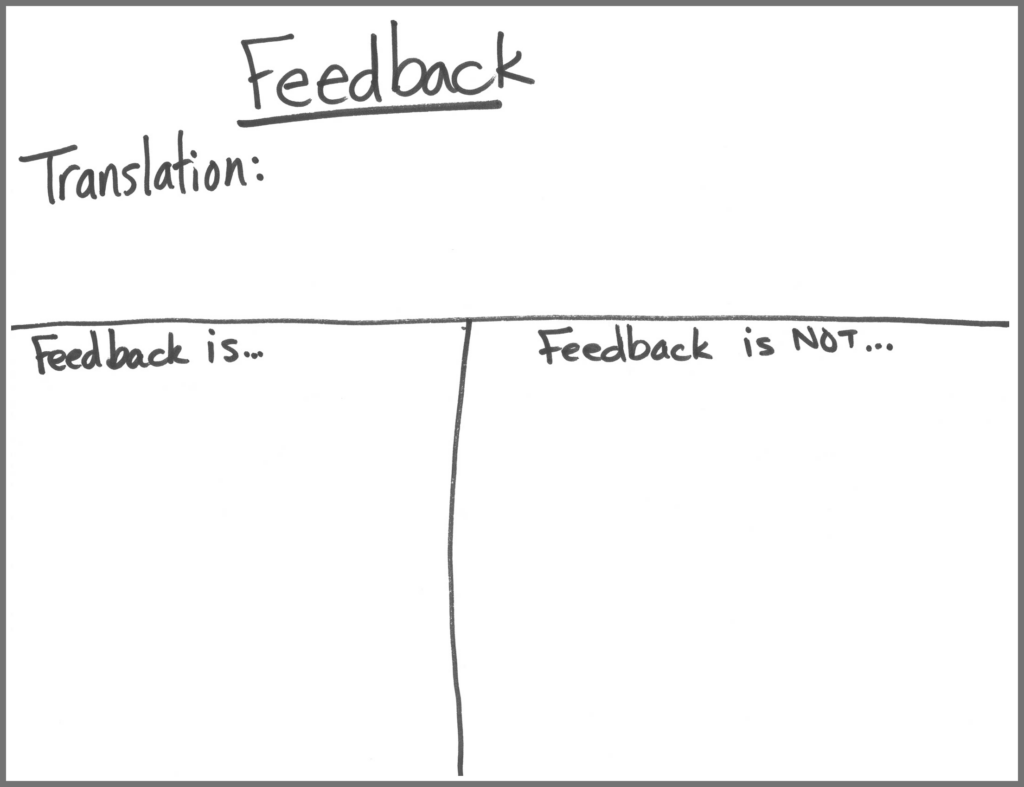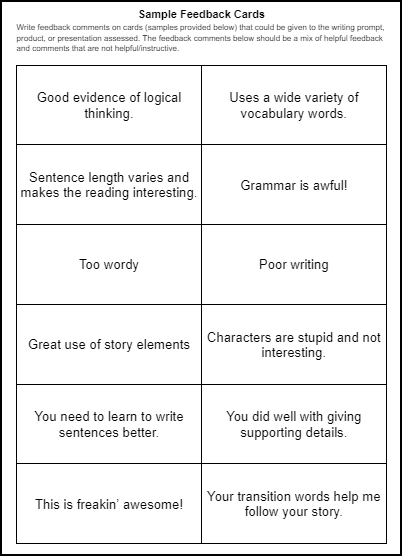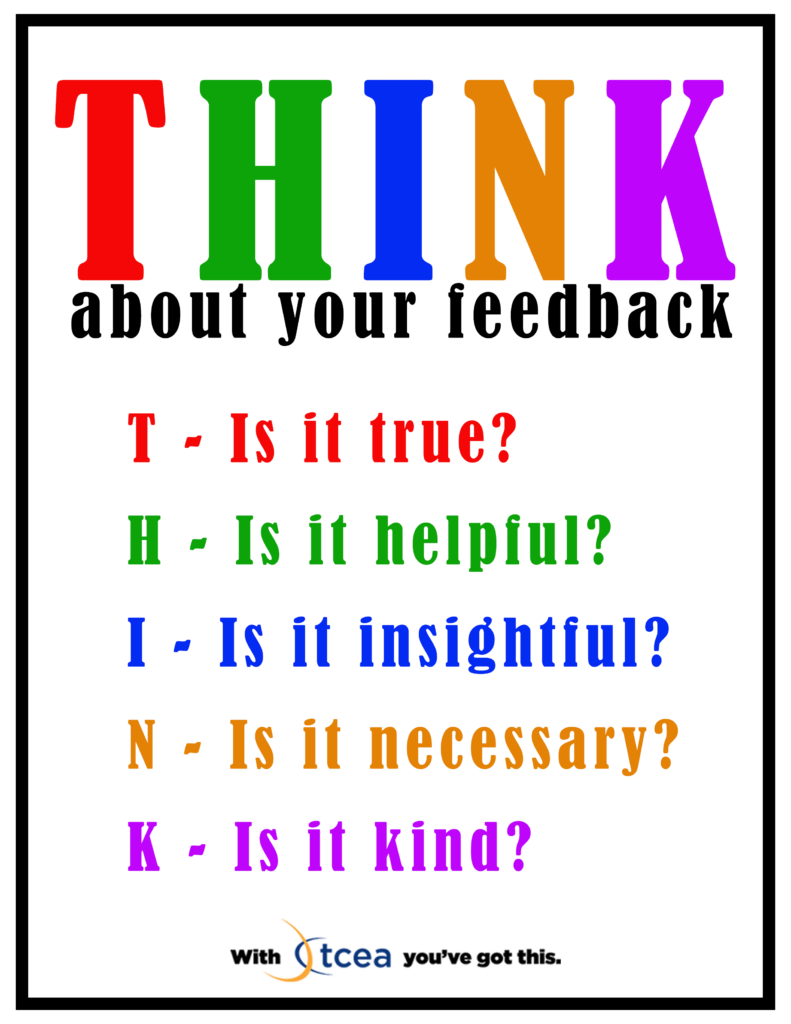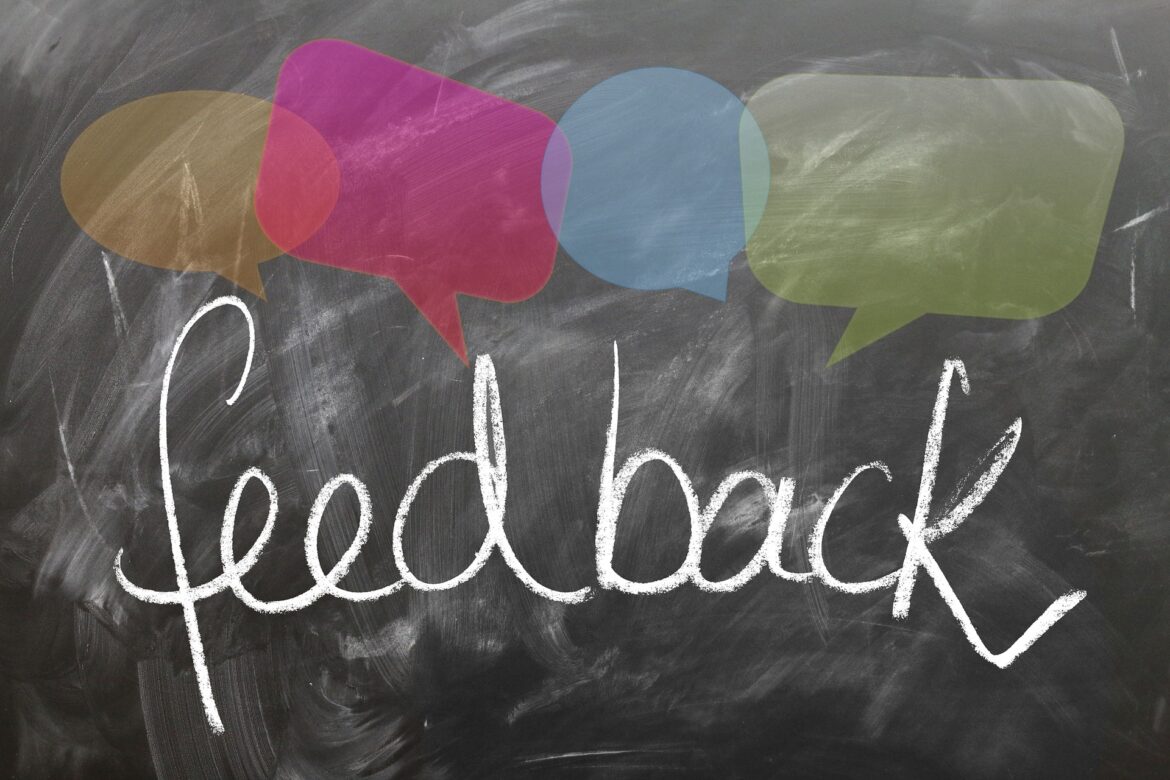It is important for students to receive valuable feedback on their work. Typically as educators, we assume full responsibility for this and become the sole distributor of feedback in our classrooms. But developing students’ ability to give peer feedback is a much-needed skill. Even though we may have modeled how to provide good feedback, that doesn’t necessarily translate to students having the skills to give that same quality feedback to their peers.
I found this out the hard way when I was a classroom teacher. I asked my students to get with a partner and share feedback on a writing prompt assignment. Consequently, I almost needed to call in the counselor to do therapy for my students because their partners were brutally honest, sharing that this was the worst writing they’ve ever seen. That day I was reminded that even third graders can give honest but cruel feedback unless taught how to say it constructively.
One of my favorite videos that deals with feedback is Austin’s Butterfly. It’s a true story told by Ron Berger. In this story, first graders learn to give constructive and helpful feedback to each other as they work on an art project that they want to submit to their state for a postcard. NOTE: These are typical first graders. They’re not descendants or protégées of van Gogh, Monet, Kahlo, or Cezanne. As you watch the video, think of how the same process could be tweaked and used with your students. Also, it might be helpful for you to show the video as you start talking with your students about giving quality feedback.
Feedback: What It Is and Isn’t
If we’re not careful, we can assume that everybody has a shared understanding of the definition of feedback. Marzano noted in his research that knowing the critical attributes of something is essential to understand the topic, concept, or skill better. Dictionary.com defines feedback as “a reaction or response to a particular process or activity.” Dr. Valerie Shute brings the definition more into focus by noting that feedback is the “information communicated to the learner that is intended to modify his or her thinking or behavior for the purpose of improving learning.” Wow! That’s exactly what we want when we give feedback: to cause a change in students’ thinking or behavior so that they improve their mastery of the skill or concept we are teaching.
So, for our purposes, feedback isn’t sharing our opinion about their work. Feedback is not saying something like “Good job!” or “Great work!” These types of statements don’t strengthen any particular skill, nor do they offer corrective insight to consider.
Here are a few ideas to help you and your students develop the skill of giving quality feedback. And, as with any skill, we want to consider going from concrete to abstract in our scaffolding. For most, if not all, of your students, this will be a skill they have not been taught before. We will be using the example of giving peer feedback on a piece of writing. But you may find it helpful to tweak these activities for providing feedback on student products, presentations, or other assignments.
Activity #1: Identifying Helpful and Unhelpful Feedback

In this first activity, you will begin by working with your students in a whole group setting. Start by asking students what “feedback” means to them. What is it? What is it not? Ask students to share a time when they received helpful or meaningful feedback. What was the feedback and how did it help them? Ask for non-examples where they received “feedback” that was confusing, didn’t help them, or wasn’t specific. Following this, share Dr. Shute’s definition of feedback above.
Ask students to work with a partner to translate Dr. Shute’s definition into what could be used in your grade level. Then, they will draw a picture of what feedback is and isn’t. Refer to the image to the right as an example layout.
For the next part of this activity, you will need a sample text for which students will provide feedback. I recommend that you write it yourself. You will need to make sure there are some errors for students to catch so that they can practice crafting feedback to share with the class. If you need help priming the pump for sample documents to use, consider choosing one from these:
- Texas Education Agency Annotated Writing Samples
- Oregon Department of Education Sample Writings
- Pattern-Based Writing Samples and Analysis for Elementary, Middle School, and High School
- Louisiana Student Work Samples for the Writing Prompt in the 2013-14 Practice Test

Once you have given them the document to read and review, give them a few minutes to discuss the writing with their partner or table group. If the piece of writing comes with a rubric, then create some example feedback cards in advance based on the rubric. If not, create your own feedback cards to use as examples. Depending on how many cards you have, you can call on a group, a partner team, or an individual.
Some sample cards might say something like:
- I can’t follow the writer’s thinking.
- Good use of adjectives when describing the animals
- The handwriting is terrible!
- Each sentence should begin with a capital letter and end with punctuation.
- Be careful not to start multiple sentences in a row with filler words such as “and” or “then.”
If needed, you can download the Sample Feedback Cards document and edit the cards. There should be some examples of valuable feedback and examples of unhelpful feedback in the mix.
Randomly select one of the example cards and call on a group, team, or individual. Then, read the card aloud and ask if it is quality feedback or not. If it is not quality, ask students for suggestions on making it more meaningful and focused.
If you would like to learn how the feedback you the teacher provide to students can be improved, check out our online, self-paced course Assessment-Based Feedback Tools. You’ll get more practice in providing effective feedback and learn some new ways to use technology in the process.
Activity #2: Practicing Peer Feedback Together
For this activity, you will need a rubric and a piece of writing for the students to evaluate. If you want them to evaluate a product, such as a diorama, a model, etc., then have a sample for them to review. If you want them to give feedback on a presentation, see if you can find a video on YouTube or Twitter for the review. Here is a sample of a student rapping her presentation. Here is another example of a young student giving a speech on why kids should have an hour for recess. For variety, here is a group presentation on a fictional company they are marketing.
After reading the writing, looking at the product, or watching the presentation, ask students to give feedback based on the rubric. In this activity, they can only give feedback based on the criteria identified in the rubric. When a student gives feedback, ask for a show of hands for who agrees and disagrees with the feedback. Ask them to justify their agreement or disagreement. After discussion and practice, ask the students to use the rubric to score the document. Scoring might be easier if done in pairs or small groups. Once finished, ask each pair or group to share a piece of feedback that is not included in the rubric, but would be helpful to the author to make their work better.
Activity #3: Practicing Peer Feedback Independently

This is where the rubber meets the road and students start giving real feedback to each other. We want to ensure that students understand how to give quality feedback, but in order to do so, they need actual practice. This activity gives them the opportunity. You will use Flipgrid to set up a Topic in which students record their work. If it is a writing assignment, have students do a screencast to record themselves reading their writing aloud. Because this isn’t a reading fluency test, allow students to ask others to read their work as a “guest narrator.” Feedback isn’t to be given on the reading of the piece, but only on the writing, and I suggest providing a rubric for the students to use to keep them on track.

After recording or uploading their videos, ask students to choose three peers to whom they will provide feedback. Subsequently, they will respond via video based on the rubric. For this, make sure that you turn on moderation of videos and comments. This allows you to approve responses before students hear them, just in case someone provides hurtful or unhelpful feedback. If a student offers feedback that isn’t helpful, you can use it as a teachable moment. Help them think of how they can say their comment (assuming it is a good comment but poorly expressed) so that the author has a clear understanding of how to improve their writing. It may be helpful to post the THINK poster (download as PDF or PNG file) around your room or in the recording area to remind students of best practices when giving feedback.
Once you have reviewed and moderated the comments, bring the lesson back to the whole class and identify a few students who did well at giving feedback. Ask the receiver of the feedback how it made them feel.
You may have to do these exercises a few times for the concept to sink in with your students. Encourage them to look for other times to practice giving feedback to others. It could be at the grocery store, at the restaurant, or even in the lunchroom. Generally, we all want to benefit from constructive and helpful feedback.
If you want to learn more about feedback, check out these other TCEA blogs on the topic. Then share with us in the comments how you help your students grow in giving feedback to others. And, if you have a humorous story about feedback, we are always up for a good chuckle.

